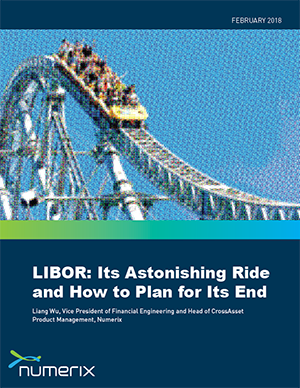
LIBOR: Its Astonishing Ride and How to Plan for Its End
In July 2017, the UK’s Financial Conduct Authority announced that after the end of 2021, it will no longer compel banks to use LIBOR as the benchmark for short-term interest rates in the interbank market. This departure from LIBOR is expected to bring some substantial changes to the global financial markets. Consider that it is the quintessential benchmark rate for pricing loans, bonds and derivatives, and is also commonly used for setting interest rates on everything from mortgages and credit cards to student and car loans.
LIBOR, however, is also tied to some of the banking industry’s biggest scandals. In 2012, the UK’s Financial Services Authority and other regulators found that a number of panel banks were submitting false rates to move LIBOR in their favor—primarily to benefit their derivatives trading positions. Multiple settlements were reached, ultimately totaling $9 billion in fines by 2015.
While reform measures were instituted, the activity of interbank unsecured loans had fallen significantly after the global financial crisis, and in 2017 was considered to no longer be sufficiently active. This made LIBOR a largely hypothetical rate and also put into question its sustainability as a benchmark. In other words, LIBOR was becoming obsolete.
In this paper, we provide an overview of LIBOR’s history, what’s motivating its disappearance, the implications for legacy contracts, and what is important when preparing for 2021.


